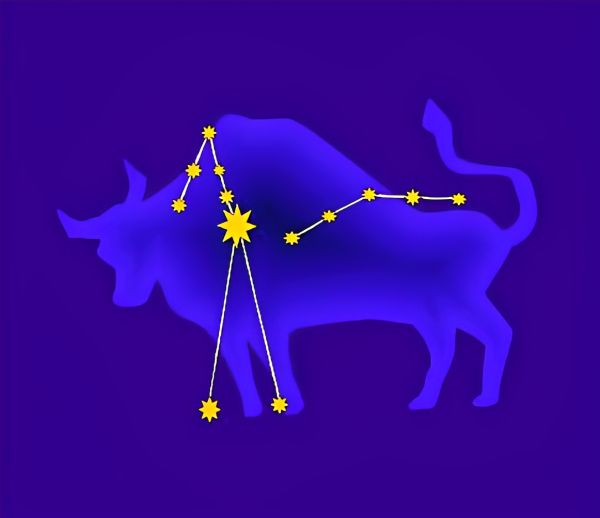Taurus Mythology
- Details
- Written by CrystalWind.ca
- Views: 15722

The Taurus Myth
The story of Taurus is most vividly tied to the tale of Zeus and Europa, a myth where the mighty Greek god transformed into a radiant white bull to whisk away the Phoenician princess to Crete, where they wed.
So, does that mean Zeus, the bull, became the Taurus constellation? Not quite. The myth gets murky here, with Zeus and the bull splitting into separate identities—or so it seems.
But there’s another tale, found in the ancient Scrolls of Delphi, that offers a different take on Taurus, one that resonates more deeply with me.
According to these scrolls, the Taurus legend begins with a massive, untamed bull named Cerus. This beast was a force of nature, feared by villagers for his habit of flattening their homes on a whim. No one owned Cerus, and his origins were a mystery. Though mortal, his sheer power and size made people believe he was unstoppable, almost godlike.
Cerus was wild, driven by impulse, trampling wherever his mood took him. One spring day, the goddess Persephone, radiant with the bloom of the season, found him stomping through a meadow of fresh flowers. She approached, unafraid. Though Cerus couldn’t speak, he seemed to sense her gentle presence, and it soothed his restless spirit. A quiet bond formed between them. Persephone, with her patience, taught Cerus to temper his strength and move with purpose.
From then on, each spring when Persephone returns to the earth, Cerus joins her. She rides atop his broad back as he gallops through the fields, her touch coaxing flowers into bloom. In autumn, when Persephone descends to the underworld, Cerus ascends to the heavens, becoming the Taurus constellation, a celestial reminder of their bond.
What’s the Deal with Taurus Mythology?
The Taurus constellation is one of humanity’s oldest symbols, tied to the bull across countless cultures. The Babylonians saw it as a divine bull in the stars. In ancient Egypt, it was linked to Apis, a sacred bull embodying the god Osiris, worshipped in Memphis.
In Greece, the story of Zeus and Europa takes center stage. This myth tells of Zeus, smitten with Europa, the daughter of Phoenician King Agenor and Queen Telephassa. Knowing his divine form might terrify her, Zeus cloaked himself as a majestic white bull, adorned with a crescent moon on his brow and pearly horns that gleamed softly.
One day, as Europa lingered by the shore, she noticed this striking bull grazing among her father’s herd. Drawn to its calm majesty, she approached. The bull knelt before her, inviting her to climb onto its back. Europa, charmed, did so. But as soon as she was seated, the bull surged toward the sea, carrying her across the waves to Crete before she could react.
On Crete, Zeus revealed his true form. He declared his love for Europa, gifting her the land that stretched before her—now known as Europe. Europa became his beloved, bearing him three sons:
- Minos, the future king of Crete, who built the famed labyrinth to cage the Minotaur, later slain by Theseus.
- Rhadamanthys, who earned a place as one of the three Judges of the Dead.
- Sarpedon, founder of the Greek city of Miletus in ancient Anatolia.
Across languages, the name Taurus echoes its bovine essence: from Latin Taurus (the Bull), to Greek Tauros, Akkadian Alap-same (Bull-of-Heaven), and Sumerian Gu.ud an.na (Bull-of-Heaven). It’s a symbol of strength, stubbornness, and stories that span the ages.
© 2025 CrystalWind.ca & Author | All Rights Reserved | No reproduction without permission | Awakening Souls Since 2008.
#CrystalWind #SpiritualJourney
Liked this article? Dive deeper into personal growth and wellness! Check out CrystalWind.ca for spiritual wisdom or explore AromaWorx.ca for natural well-being tips. Spread the positivity—share this with friends on their happiness journey!
Let’s Chat! Drop Your Thoughts Below! ![]()
Latest Articles
Dive into the Mystical World of the Crystal Wind Oracle Deck!
Get All the Enchanting Details Now!
NEW Expanded Boxed Edition!
Now with 58 Cards for Richer Wisdom!

Imagine a world of inspiration and healing, free for all—made possible by YOU!
Donate Now—Ignite the Magic at CrystalWind.ca!

Epilepsy - Finding A Cure
Your donation can make a difference!
Help us find a cure – donate now!
Unlock Your Light: Join Lightworkers Worldwide on CrystalWind.ca!
Articles: Hindu Mythology
Articles: Egyptian Mythology
Articles: Celtic Mythology
Articles: Norse Mythology
Articles: Compendium
Articles: Greek Mythology
Follow Us!
Featured This Month
Lammas by The Hedgewitch
Although in the heat of a Mid-western summer it might be difficult to discer... Read more
Cancer Mythology
The Mythology of Cancer: A Celestial Tale of Loyalty and Sacrifice Among th... Read more
Abalone Shell
Echos Of The Ancestors Abalone strengthens the structure of the body and th... Read more
Sun in Cancer
Cancer Sun Sign Characteristics Overview The name "Cancer" comes from Latin, ... Read more
Egyptian Zodiac/Astrology
Egyptian astrology was one of the earliest forms of astrology. The Egyptians w... Read more
Lugh - Celtic God Of The Sun
The god Lugh was worshiped in Ireland as a deity of the sun. This connection... Read more
Chalcedony
The Stone Of Orators Chalcedony was very popular as a decorative stone in ant... Read more













































